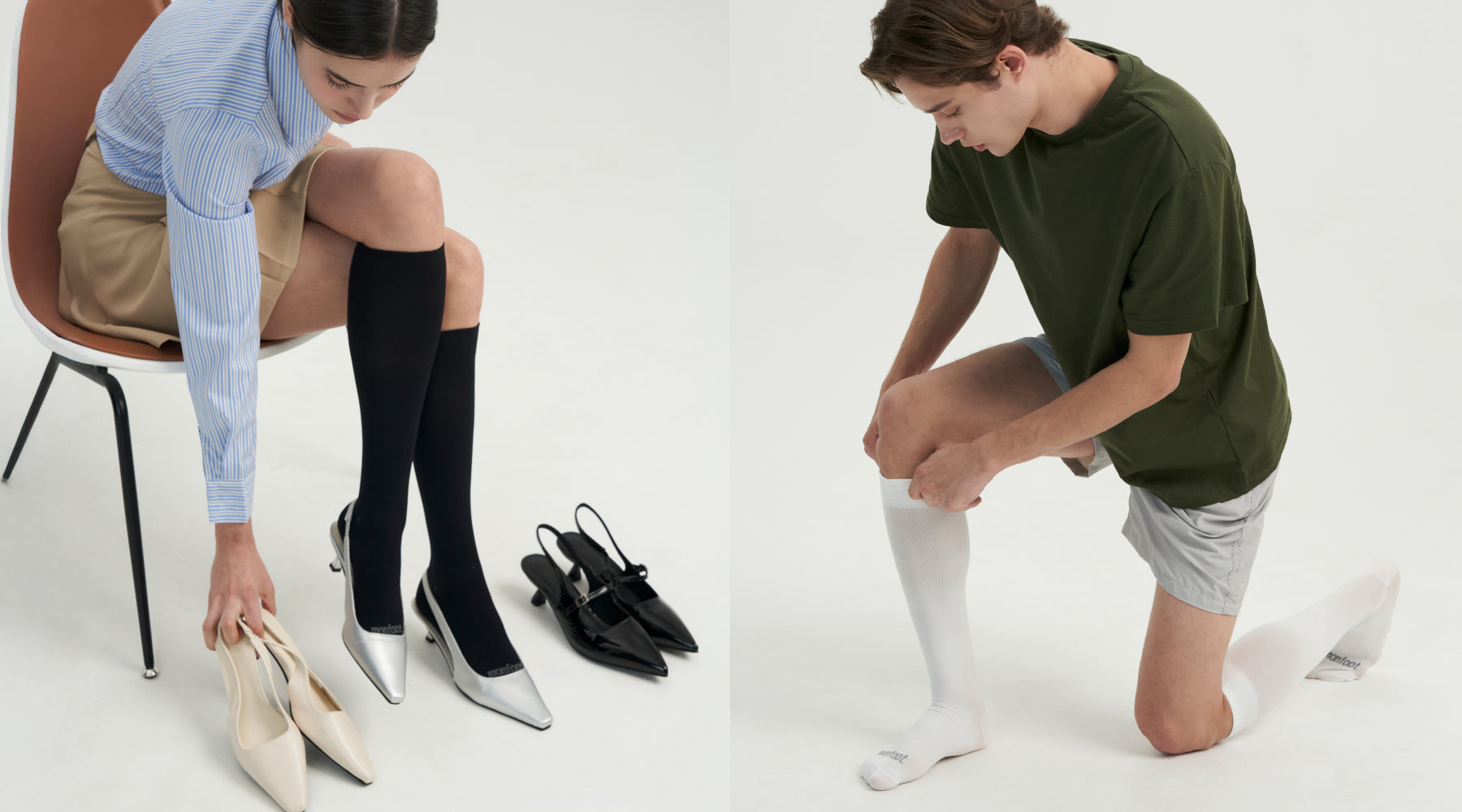If you're a runner looking to boost your performance and recovery, compression socks might be your new best friend. These specialized accessories enhance blood flow, reduce muscle fatigue, and help prevent injuries. By applying graduated pressure, they support your muscles and keep you running strong. Curious how these socks can transform your running experience? Let's explore their benefits and see how choosing the right pair can make all the difference.
Understanding Compression Socks
Compression socks are a runner's ally, designed to apply graduated pressure that starts strong at the ankle and gradually lessens as it moves up the leg.
This unique design enhances blood circulation by ensuring oxygen-rich blood reaches your muscles efficiently while aiding the return of deoxygenated blood to the heart. As a result, you’ll experience less muscle fatigue and quicker recovery after exercise.
By reducing muscle vibration, these socks help prevent micro-tears, minimizing soreness and aiding recovery. Additionally, they play an important role in preventing injuries, offering support to your lower legs and protecting against conditions like shin splints and Achilles tendonitis.
With these benefits, compression socks are essential for any runner aiming to boost performance and endurance.
Enhancing Circulation and Blood Flow
When you lace up your running shoes, don't underestimate the power of enhancing circulation with the right gear. Compression socks can be a game-changer for your running performance.
By applying graduated pressure, these socks improve blood flow, ensuring efficient circulation from your feet back to your heart. This enhanced circulation increases the delivery of oxygen and nutrients to your muscles, a critical factor in boosting performance and muscle recovery.
With compression socks, you prevent blood from pooling in your lower legs, reducing swelling and discomfort. Research even shows a boost in oxygenated blood flow by up to 40%, which could mean improved endurance.
Plus, better circulation aids in flushing out metabolic waste, helping you recover faster post-run.
Minimizing Muscle Fatigue and Soreness
While you're pounding the pavement, minimizing muscle fatigue and soreness becomes essential for maintaining your running momentum. Compression socks are your secret weapon in achieving this.
By applying graduated pressure, they enhance blood circulation, ensuring your muscles receive more oxygen and nutrients. This process aids in quicker recovery and helps reduce soreness after your run.
Compression socks also play a vital role in minimizing muscle vibration, which decreases the risk of micro-tears and subsequent muscle fatigue. They effectively flush out lactic acid and other metabolic waste, further reducing muscle soreness.
Additionally, these socks support the calf and lower leg muscles, stabilizing them and preventing unnecessary strain. Embrace compression socks to elevate your running experience by keeping your legs fresh and ready.
Supporting Injury Prevention and Recovery
As you focus on minimizing muscle fatigue and soreness, it's equally important to support injury prevention and recovery.
Compression socks play an essential role in keeping you on track by providing targeted support to your lower leg muscles. They help reduce the risk of injuries like shin splints and Achilles tendonitis by stabilizing muscles and tendons during runs.
Enhanced blood circulation guarantees better oxygen delivery, expediting the recovery process and reducing muscle soreness and stiffness after exercise. The design of compression socks prevents blood from pooling in your lower extremities, minimizing swelling and discomfort.
With improved venous return, they also lower the chances of developing conditions like deep vein thrombosis (DVT), enabling a quicker recovery and consistent training routine.
Choosing the Right Compression Socks for You
How do you choose the perfect compression socks for your running needs? Start by considering the compression level; 15-20 mmHg is ideal for general use, while 20-30 mmHg offers more intense support.
Proper sizing is essential, so measure your calf circumference at its widest point and consult manufacturer size charts to guarantee a snug fit without being too tight. Opt for breathable materials like nylon or spandex to keep your feet dry and comfortable, which helps prevent blisters.
Look for design features such as extra cushioning in high-impact areas and seamless construction to reduce chafing. Finally, think about your personal preferences regarding sock height, whether you prefer no-show, ankle, or crew styles, based on your running conditions and comfort needs.
